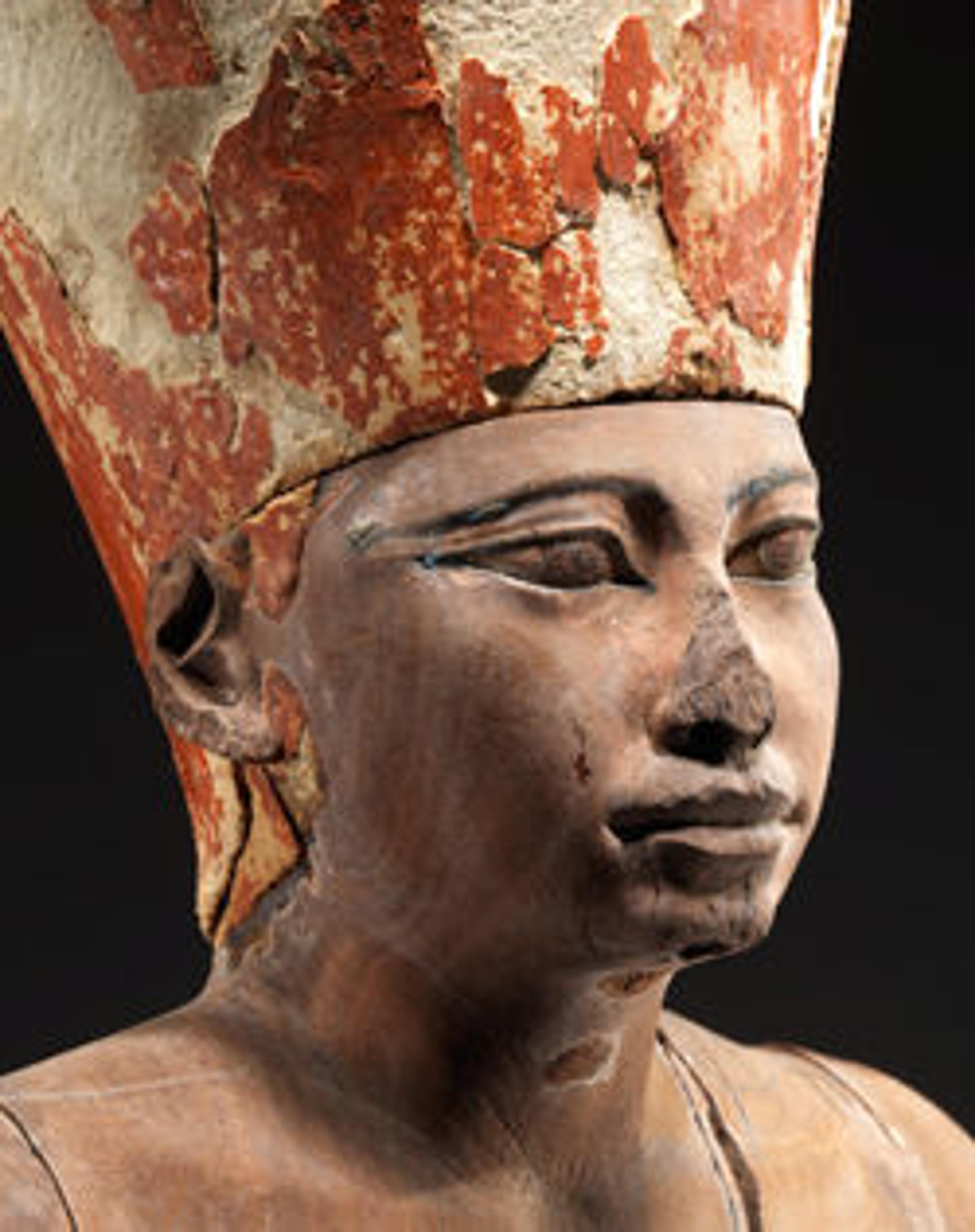Jug Decorated with Dolphins and Birds
No exact parallel to this magnificent vessel has yet been found anywhere. The presence of dolphins and the freedom with which all the animals move around the vessel body have suggested influences from the Aegean to some scholars. The general shape and double handle, however, are Levantine, and a possible source location for the clay has been identified in southern Canaan, while the technique of decoration is similar to, but not the same as, the one used on the "Tell el-Jahudiyeh" pottery.
Three dolphins move around the foot of the jug, with three large birds (possibly geese) above each of them; a smaller bird is tucked below the handle. Is this perhaps an image of the Levantine coast, with dolphins in the water and migratory geese coming to rest on the beach? A Dynasty 13 date is suggested by other objects found in the same tomb shaft.
Three dolphins move around the foot of the jug, with three large birds (possibly geese) above each of them; a smaller bird is tucked below the handle. Is this perhaps an image of the Levantine coast, with dolphins in the water and migratory geese coming to rest on the beach? A Dynasty 13 date is suggested by other objects found in the same tomb shaft.
Artwork Details
- Title:Jug Decorated with Dolphins and Birds
- Period:Middle Kingdom or Second Intermediate Period
- Dynasty:Dynasty 13–15
- Date:ca. 1750–1550 B.C.
- Geography:From Egypt, Memphite Region, Lisht North, cemetery south of pyramid below House A1:3, Pit 879, MMA excavations, 1920–21
- Medium:Pottery, manganese black, gypsum fill
- Dimensions:H. 15 cm (5 7/8 in.); Diam. 14.9 cm (5 7/8 in.)
- Credit Line:Rogers Fund and Edward S. Harkness Gift, 1922
- Object Number:22.1.95
- Curatorial Department: Egyptian Art
More Artwork
Research Resources
The Met provides unparalleled resources for research and welcomes an international community of students and scholars. The Met's Open Access API is where creators and researchers can connect to the The Met collection. Open Access data and public domain images are available for unrestricted commercial and noncommercial use without permission or fee.
To request images under copyright and other restrictions, please use this Image Request form.
Feedback
We continue to research and examine historical and cultural context for objects in The Met collection. If you have comments or questions about this object record, please contact us using the form below. The Museum looks forward to receiving your comments.
